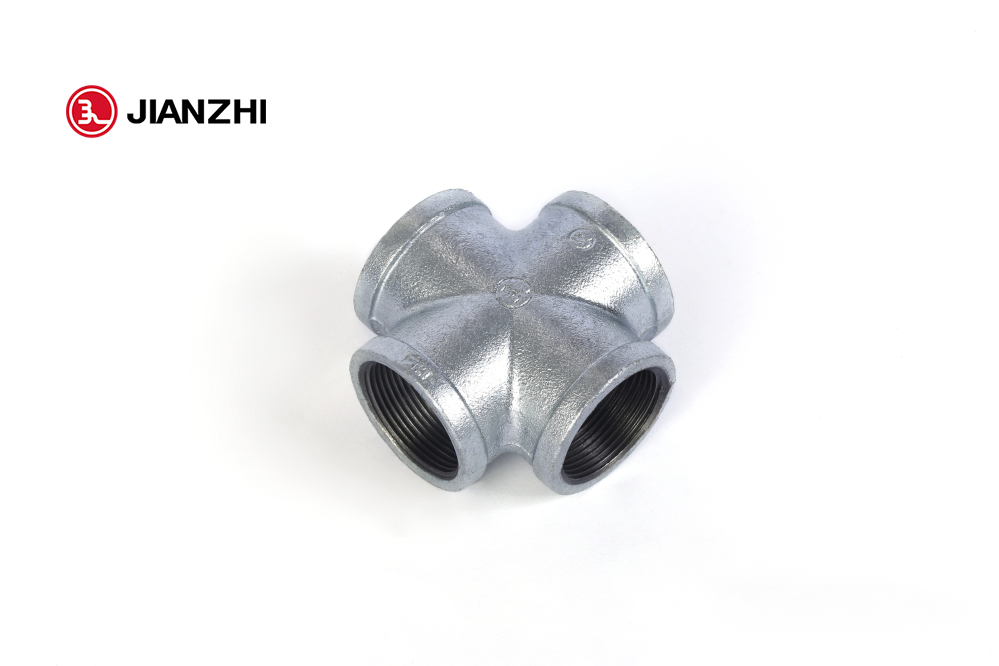- Versatile Pipe Routing: Four way pipe fittings allow for the efficient and flexible routing of pipes in multiple directions. They enable the connection of four pipes at right angles, providing options for complex pipe configurations and branching systems.
- Simplified System Design: With four way pipe fittings, it becomes easier to design and construct plumbing or industrial systems that require the distribution of fluids or gases to multiple locations. The fittings eliminate the need for additional tees, elbows, or connectors, simplifying the overall system design.
- Reduced Number of Joints: By connecting four pipes together at a single point, four way pipe fittings help minimize the number of joints in a system. This reduces the chances of potential leaks or failure points, enhancing the overall reliability and efficiency of the system.
- Space Efficiency: Four way pipe fittings can help conserve space in plumbing or industrial installations. They allow for compact pipe layouts, especially in situations where multiple pipes need to be connected in a confined area. This can be advantageous, particularly in tight spaces or when optimizing the use of available floor or wall areas.
- Improved Flow Distribution: The use of four way pipe fittings ensures equal distribution of fluids or gases to all connected pipes. This helps maintain balanced flow rates and pressures throughout the system, preventing uneven distribution and potential performance issues.
- Easy Maintenance and Modifications: Four way pipe fittings facilitate ease of maintenance, repairs, or system modifications. If a specific section of the system needs to be serviced or replaced, the four way fitting allows for the disconnection of the affected pipe without disturbing the rest of the system.
- Cost Savings: By reducing the number of fittings and joints required, four way pipe fittings can contribute to cost savings in terms of materials, labor, and installation time. Additionally, their efficient design and improved flow distribution can optimize energy consumption and reduce operational costs.
It’s important to note that the advantages of using four way pipe fittings may vary depending on the specific application, system requirements, four way pipe fitting and industry standards. Consider consulting with professionals or referring to relevant guidelines to ensure the proper selection and installation of four way pipe fittings in your specific plumbing or industrial system.
What are some potential disadvantages or limitations of using four way pipe fittings?
While four way pipe fittings offer several advantages, there are some potential disadvantages or limitations to consider:
- Increased Complexity: The use of four way pipe fittings introduces added complexity to the piping system. Managing multiple connections and ensuring proper alignment of pipes can be more challenging compared to simpler fittings. This complexity may require additional planning, expertise, and care during installation.
- Space Constraints: While four way pipe fittings can save space in some situations, they can also be bulkier compared to other types of fittings. This can be a limitation in tight or confined spaces where there may be limited room for maneuvering or installing the fittings.
- Higher Cost: Four way pipe fittings can be more costly than standard fittings due to their more intricate design and manufacturing requirements. The additional complexity and materials involved in their construction can contribute to higher costs, which may impact the overall budget of a plumbing or industrial system.
- Limited Availability: Depending on the specific size, material, or design requirements, finding the exact four way pipe fitting that matches the system specifications can be challenging. It may require sourcing from specialized suppliers or manufacturers, potentially leading to longer lead times or higher procurement costs.
- Flow Restrictions: The design of four way pipe fittings can sometimes cause pressure drops or flow restrictions within the system. The branching of pipes at right angles can result in turbulence or uneven distribution of fluid or gas, impacting the overall flow performance.
- Maintenance and Accessibility: In systems utilizing four way pipe fittings, accessing and maintaining individual pipes can be more difficult compared to systems with simpler fittings. If a specific pipe needs to be repaired or replaced, the surrounding pipes and fittings may need to be disassembled, adding complexity and time to maintenance procedures.
- Compatibility and Standards: Ensuring compatibility and adherence to industry standards can be crucial when using four way pipe fittings. It is important to verify that the chosen fittings meet the required specifications, materials, and pressure ratings for the specific application. Failure to comply with standards can lead to leaks, system failures, or safety hazards.
Overall, while four way pipe fittings offer unique advantages, it is essential to consider these potential disadvantages and limitations in the context of your specific plumbing or industrial system. Proper planning, consultation with professionals, and adherence to industry best practices can help mitigate these challenges and ensure the successful implementation of four way pipe fittings.
